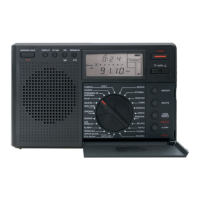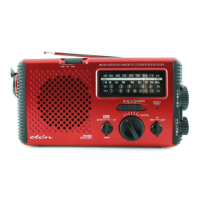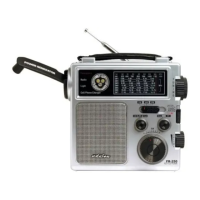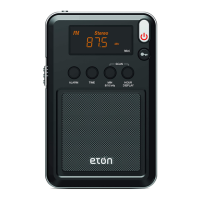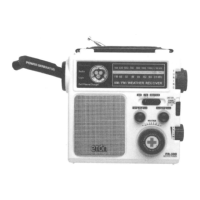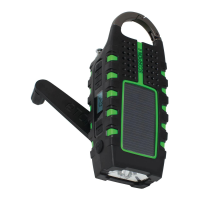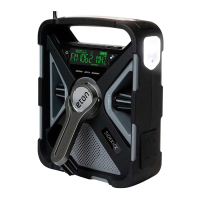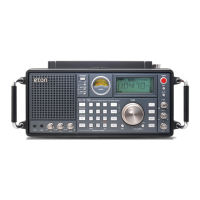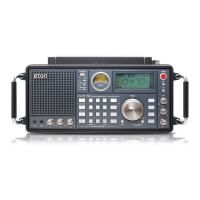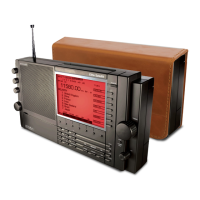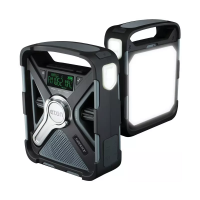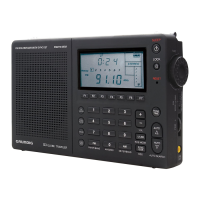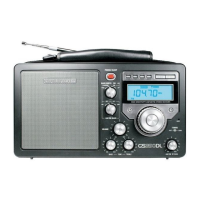
Do you have a question about the Eton AM/FM Radio and is the answer not in the manual?
Overview of the owner's manual sections and introduction to shortwave listening.
Lists the key capabilities and specifications of the S350DL radio model.
Details all buttons, knobs, indicators, and the LCD display located on the front of the radio.
Identifies ports, jacks, antenna connections, battery compartment, and carrying features on the sides and back.
Instructions for inserting and managing batteries, including the power indicator.
Guidelines for connecting the radio to AC power using the provided adaptor.
Information on using a 12-volt DC battery source with a converter.
Recommended initial settings for volume, tone, RF gain, and switches.
Methods for powering the radio on, including with or without an automatic timer.
Explanation of the signal strength meter displayed on the LCD.
Guide to using the telescopic antenna and tuning knobs for FM reception.
Instructions for tuning AM stations and information on the frequency lock feature.
Guidance for tuning shortwave stations, catering to new and experienced listeners.
Instructions for setting the clock and its 12/24 hour format.
Explanation of how the radio switches to battery power during an AC failure.
Details on setting the radio to turn off automatically after a specified time.
Instructions for setting, activating, and deactivating the programmable alarm clock.
How to use the snooze feature when the alarm or timer activates the radio.
Important considerations regarding the turn-on timer feature operation.
Methods for activating the display backlight for visibility in low light.
Procedure for resetting the radio's microchip in case of malfunction.
Using the L/R line level outputs to connect to external audio devices.
Connecting stereo headphones to the 1/8 inch (3.5mm) earphone jack.
Guidance on connecting external antennas for Shortwave, AM, and FM reception.
Explains the concept of shortwave broadcasting and the basics of listening.
Recommendations for identifying and locating specific shortwave stations.
Explains the concept of frequency bands and their importance for shortwave reception.
Lists major shortwave bands with corresponding frequencies and radio switch settings.
Explains how time of day affects shortwave signal reception on different bands.
Guidance for optimizing shortwave reception during daylight hours.
Strategies for effective shortwave listening during evening and nighttime hours.
Instructions for registering the product to ensure full warranty coverage.
Details of the one-year limited warranty for parts and labor.
Steps and contact information for obtaining service for the product.
Outlines the two types of service available: warranty and non-warranty repairs.
